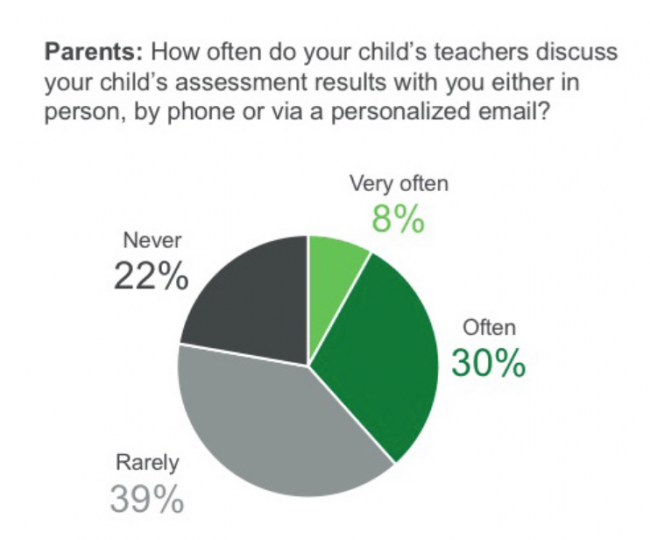What Principals Need to Know About Making Assessments Work
A new report on assessments and multiple measures stresses that more communication is needed.
Communicator
May 2016, Volume 39, Issue 9
 Assessments are all over the headlines these days, from the implications of the recent passage of the Every Student Succeeds Act (ESSA) to continued conversations in many districts and schools about streamlining assessments. Yet, assessments aren’t a new topic of conversation for parents, teachers, or principals; school communities have been talking about the value of assessment and how to use their results to best support children for decades. But these conversations are too often left behind closed classroom doors.
Assessments are all over the headlines these days, from the implications of the recent passage of the Every Student Succeeds Act (ESSA) to continued conversations in many districts and schools about streamlining assessments. Yet, assessments aren’t a new topic of conversation for parents, teachers, or principals; school communities have been talking about the value of assessment and how to use their results to best support children for decades. But these conversations are too often left behind closed classroom doors.
A new report commissioned by the not-for-profit Northwest Evaluation Association (NWEA) and conducted by Gallup has opened up these doors.
The report, Make Assessment Work for All Students: Multiple Measures Matter, presents findings of a national survey of 4,200 parents, teachers, students, superintendents, and—for the first time this year—principals. It builds on NWEA’s 2012 and 2014 reports, and provides perspectives on various elements of the assessment implementation and communication process.
What Matters?
When it comes to the value of various types of assessments, teachers are interested in gathering information from multiple types of assessments which include classroom tests and quizzes and formative assessments. They use data provided by assessments to adjust their instructional strategies (92 percent), discuss student progress with parents (87 percent), and plan and differentiate instruction (85 percent).
Parents note assessments can help improve their children’s learning outcomes and help evaluate school performance. These include classroom tests and quizzes (79 percent), formative assessments (74 percent), and interim assessments (69 percent).
So a large majority of educators and parents understand that multiple measures of assessment can be used to improve a child’s learning and a teacher’s instructional effectiveness—capabilities that are far beyond current state accountability tests. And, yet, 60 percent of parents mistakenly believe this state data is also being used to inform instruction in classrooms. The current dialogue around multiple measures, then, presents an opportunity to engage in a dialogue with parents and community members on the key elements and applications of different assessments in schools.
The study also stressed the importance of stronger avenues of communication between teachers and parents. More than six in 10 parents said their child’s teachers rarely or never discuss their child’s assessment results with them, and only 34 percent of teachers said they think parents understand the purpose of formative assessments. At the same time, teachers report being more confident in their ability to administer tests than interpret them or communicate their results. These insights underline the need for more frequent, targeted conversations with parents about the goals of these various tests and the uses of their results. The study also emphasized the need to provide the tools and supports to educators that will allow them to confidently discuss results with not only parents but also policymakers and administrators.
Recommendations
Schools can accomplish this objective through the creation of more frequent opportunities for discussion of assessment results with teachers. While more than seven in 10 teachers noted they have this dialogue at least monthly with other educators, 28 percent convene less often, emphasizing the need for additional formal trainings and collaborations within a school.
The study suggests that we focus on the establishment of forums, town halls, and other information-sharing events that include and highlight the perspectives of educators and parents. These can serve as platforms to increase assessment literacy across the community. Furthermore, schools should translate insights from these sessions into the development of tests that can both measure and bolster career and college readiness. And, finally, they can target federal and state funds to promote assessment education, allocate time for professional development and support teachers’ innovative use of multiple measures.
Ultimately, the findings in this survey have the potential to serve as a tool for broadening and enhancing our conversations about the appropriate role and value of assessments in supporting teaching and learning.
—
Copyright © 2016. National Association of Elementary School Principals. No part of the articles in NAESP magazines, newsletters, or website may be reproduced in any medium without the permission of the National Association of Elementary School Principals. For more information, view NAESP’s reprint policy.

